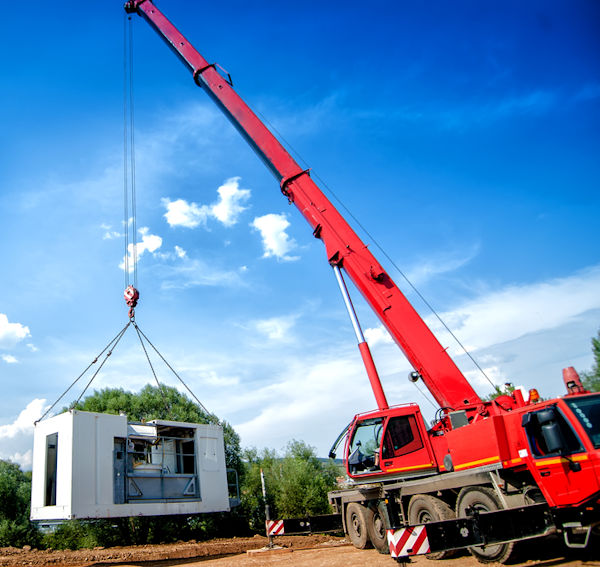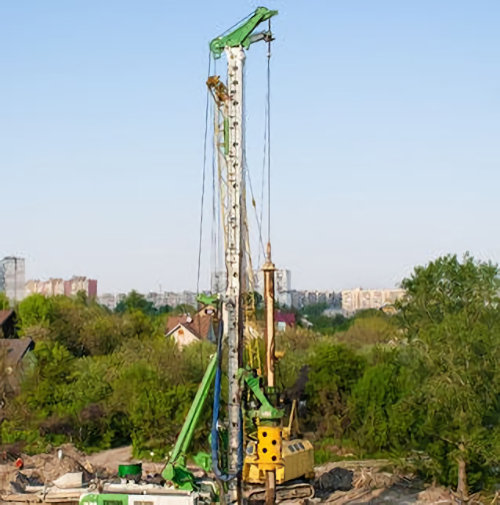16.Q Powered Industrial Trucks (PITs)/Telehandlers.
16.Q.01 This equipment may only be used to hoist loads if allowed by the equipment manufacturer. If these procedures are unavailable, you are prohibited from performing this function.
16.Q.02 Operations involving the use of PITs to raise personnel and/or using rigging to transport or hoist loads or personnel require different operator skills and considerations than the standard PIT operations performed with this equipment. When PITs are to be used to transport personnel or hoist loads utilizing hooks, eyes, slings, chains, or other rigging the following requirements must apply:
- Proper operating procedures in accordance with the equipment manufacturer's operating manual;
- Written proof of qualifications of equipment operators, riggers, and others involved in the transporting and hoisting operations;
- Other personnel may also operate this equipment under the specific conditions as identified in Section 16.B.01.
- Proper use and on site availability of manufacturer's load rating capacities or charts as related to approved attachments;
- Proper use of rigging, including positive latching devices to secure the load and rigging;
- Inspection of rigging;
- Use of tag lines to control the load;
- Adequate communications, and
- An AHA specific to the transporting or hoisting operation must be developed and provided to GDA.
16.R Pile Driving Operations.
16.R.01 Pile driving equipment must be outfitted with a positive and negative restraint device to prevent accidental hammer disengagement ( i.e., preventing the hammer from falling or uncontrolled rising out of the lead, as well as preventing contact with head block or sheaves, if so equipped).
- The contractor must comply with all manufacturer's instructions, procedures and recommendations applicable to the operational functions of equipment, including its use with pile driving attachments. The safe operating speeds, lifting capacity, stability under load must not be exceeded. When manufacturer's instructions are not available, the employer must develop and ensure compliance with all procedures necessary for the safe operation of the equipment and attachments and
- (1) Procedures for the operational controls must be developed by a QP.
- (2) Procedures related to the capacity of the equipment must be developed and signed by a RPE familiar with the equipment.
- For contractor-installed pile driving attachments to equipment whose original intent was for a different task, (for example an excavator or forklift modified to drive piling) the attachment must be designed by a RPE with experience designing construction equipment, and comply with 16.R.01.(a).
- The operator of this type of equipment must comply with the requirements of 16.S.03 and must be trained and authorized to operate the pile driving attachment.
- A Dedicated Pile-Driver is a machine that is designed to function exclusively as a pile-driver. These machines typically have the ability to both hoist the material that will be pile-driven and to pile-drive that material. This type of equipment and the operator must comply with Sections 16.A through 16.J, 16.L, and 16.R. > See Figures 16-2, Dedicated Pile Driver, and 16-3, Non-Dedicated Pile Driver.
16.R.02 Prior to initiating pile driving or extraction operations, the contractor must develop a site-specific safety plan. The plan must identify specific steps for the intended operations, list of hazards, and procedures to minimize or eliminate those hazards. Plans must include, as a minimum:
- Identification of utility locations both above and below grade;
- Designated areas for equipment operations and material storage;
- Assembly and disassembly sequences for pile driving equipment;
- Operation of pile driving equipment and handling of pile materials;
- A geotechnical report identifying subsurface and surface ground conditions;
- A documented daily inspection requirement to include the hammer, cushion blocks, rigging, fuel lines, pressurized hoses, clamps, welds, hardware, and all other pile driving associated equipment, and
- Establishment of a controlled work area to prevent access by persons not directly involved in the operation.
16.R.03 With the exception of the pile driver equipment operator (crane/track hoe/forklift), personnel must not stand under the kicker/spotter or directly under, in front of, or closer than 12 ft (3.7 m), or greater if manufacturer specifies, of the pile hammer or pile when the pile is being driven.
16.R.04 The crane/track hoe/forklift operator station must be protected from falling objects.
16.R.05 Cranes and mechanized equipment used only for pile driving and extracting operations (except telescopic boom cranes), are exempt from the requirements for A2B devices. > See Section 16.E.03.c(3).
16.R.06 Guy, outriggers, thrust outs, counter-balances, or rail clamps must be provided to maintain stability of pile-driver rigs.
Knowledge Check Choose the best answer for the question.
16-22. How close may personnel, other than the pile driver equipment operator, stand to the pile hammer or pile when the pile is being driven?
You forgot to answer the question!


